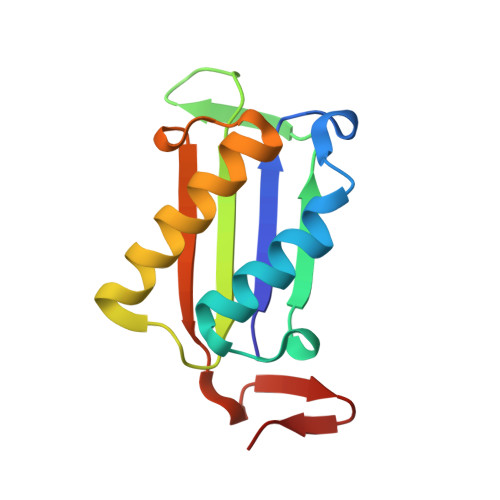Xenopus laevis Macrophage Migration Inhibitory Factor Is Essential for Axis Formation and Neural Development.
Suzuki, M., Takamura, Y., Maeno, M., Tochinai, S., Iyaguchi, D., Tanaka, I., Nishihira, J., Ishibashi, T.(2004) J Biol Chem 279: 21406-21414
- PubMed: 15024012
- DOI: https://doi.org/10.1074/jbc.M311416200
- Primary Citation of Related Structures:
1UIZ - PubMed Abstract:
Macrophage migration inhibitory factor (MIF) is an immunoregulatory cytokine involved in both acquired and innate immunity. MIF also has many functions outside the immune system, such as isomerase and oxidoreductase activities and control of cell proliferation. Considering the involvement of MIF in various intra- and extracellular events, we expected that MIF might also be important in vertebrate development. To elucidate the possible role of MIF in developmental processes, we knocked down MIF in embryos of the African clawed frog Xenopus laevis, using MIF-specific morpholino oligomers (MOs). For the synthesis of the MOs, we cloned a cDNA for a Xenopus homolog of MIF. Sequence analysis, determination of the isomerase activity, and x-ray crystallographic analysis revealed that the protein encoded by the cDNA was the ortholog of mammalian MIF. We carried out whole mount in situ hybridization of MIF mRNA and found that MIF was expressed at high levels in the neural tissues of normal embryos. Although early embryogenesis of MO-injected embryos proceeded normally until the gastrula stage, their neurulation was completely inhibited. At the tailbud stage, the MO-injected embryos lacked neural and mesodermal tissues, and also showed severe defects in their head and tail structures. Thus, MIF was found to be essential for axis formation and neural development of Xenopus embryos.
Organizational Affiliation:
Department of Molecular Biochemistry, Hokkaido University Graduate School of Medicine, Kita-15, Nishi-7, Sapporo 060-8638, Japan.














